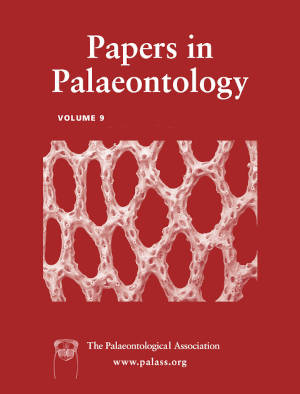Article: A review of the glacial environment arthropod trace fossils Umfolozia and Warvichnium with the description of new ichnotaxa
Publication: Papers in Palaeontology
Volume:
9
Part:
5
Publication Date:
2023
Article number:
e1526
Author(s):
Gabriel E. B. de Barros, Bernardo de C. P. e M. Peixoto, João H. D. Lima, Nicholas J. Minter, and Daniel Sedorko
DOI:
10.1002/spp2.1526
Abstract
Abstract Trace fossils are important records of the presence and behaviour of animals in the past, especially in deposits where few body fossils are preserved. They tend to provide the main palaeobiological record for past glacial environments, and are thus very important for understanding the ecology of these palaeoenvironments. Two ichnogenera are common in glacial sediments: Umfolozia and Warvichnium. Both Umfolozia and Warvichnium are attributed to arthropods; the former occurs across the Late Palaeozoic Ice Age (LPIA) and the latter occurs during both the LPIA and the Quaternary glacial event. Here, we review the stratigraphic record, ichnotaxonomy, palaeoecology, palaeoenvironments and possible tracemakers of these two ichnogenera. In addition to assessing morphological ichnotaxobases, we use multivariate morphometric analysis and inferential statistical tests to support our ichnotaxonomic revisions. The diagnosis of Umfolozia is revised, with the description of a new ichnospecies, Umfolozia terere, and the emendation of Umfolozia riojana (formerly Umfolozia longula). We revised Warvichnium, maintaining the original Warvichnium ulbrichi and allocating two morphologies to the ichnogenus Irichnus: Irichnus saltatorius and I. paripinnatus isp. nov. These trace fossils record several behaviours, and have implications for palaeoenvironmental interpretations and the evolution of invertebrate ecosystems. Using Umfolozia and Warvichnium as case studies, we demonstrate the application of morphometric analysis in ichnotaxonomy and highlight this as a tool that may be applied to other trace-fossil groups.
